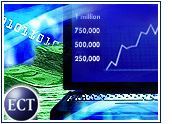
Total U.S. online spending decreased from US$3.9 billion in May to $3.2 billion in June, an 18.3 percent drop, according to a report released Wednesday by Forrester Research (Nasdaq: FORR) in conjunction with Greenfield Online.
Even taking the sputtering U.S. economy into account, Forrester research director James McQuivey did not expect to see this dramatic of a decline in the latest monthly Forrester Online Retail Index, especially on the heels of the drop from April’s $4.3 billion to May’s $3.9 billion.
“What happened was fewer people decided to buy online in June, and when they did, they spent 10 percent less,” McQuivey told the E-Commerce Times. “And that will add up.”
Gail Janensch, vice president of corporate communications at Wilton, Connecticut-based Greenfield Online, was not surprised by the June Index and warned against reacting too negatively.
“It would be a huge mistake to say e-commerce is in trouble,” Janensch told the E-Commerce Times. “The Online Retail Index is a tracking study that follows a trend over time, and to over-emphasize one or two months’ findings is to miss the purpose of the study.”
Long-Term View
The Forrester Online Retail Index is based on 5,000 responses during the first nine business days of the month from an online panel developed by Greenfield Online, an Internet-powered market research firm.
According to the June Index, the number of households shopping online dropped to 13.1 million in June from 14.8 million in May. Consumers spent an average of $245 per person in June, compared with $265 in May.
Greenfield Online conducts a similar tracking study called the Digital Consumer Shopping Index, which plots data on a quarterly basis, rather than monthly. Janensch said that with 12 quarters of data, Greenfield is seeing a pattern in which online retailing trends closely mirror those in offline retailing.
“With retail sales down in stores and paper catalogs, it’s no surprise online sales are down as well,” said Janesch.
Waning Big-Ticket Sales
In the big-ticket category, where individual purchase prices must exceed $200, there were no gainers to speak of, largely accounting for the overall decline in the Forrester index.
According to McQuivey, big-ticket items, which include computer hardware, hotel reservations and airline tickets, are usually responsible for 60 to 70 percent of total spending.
“What’s most surprising about June’s index is that the decline was across the board,” said McQuivey.
Travel Suffers
The most lucrative segment by far, airline tickets, lead the contraction, plummeting from $698 million in May, to $566 million in June. Citing a recent report from the Airlines Reporting Corporation, McQuivey noted that airline ticket sales overall are down 11 percent, which sheds light on the online slump.
“In a weak economy, the first two areas to suffer are usually travel and car sales,” said McQuivey. “So this is not surprising.”
Airline tickets did remain the segment of highest spending in June, with hotel reservations a distant second, at $314 million. Computer hardware also contributed to the big-ticket decline, falling from $304 million to $232 million, while appliances fell from $36 million to $5 million.
Greenfield’s Janesch suggested that the travel sector might be the bellwether to watch going forward, with marketers in the airline industry so bullish about online sales.
Bumpy Ride Ahead
Looking ahead to the July Index, McQuivey hedged his bets, but suggested that a rebound to at least $3.7 billion in online retail spending would be favorable news.
Compared with the $4 billion in July 2000, this would still be a year-over-year slippage, but in a soft economy would still be considered encouraging, according to McQuivey.
Longer term, McQuivey expects online retail sales to make episodal comebacks during the back-to-school and holiday seasons, but no wholesale turnaround until the first quarter of 2002, when shrinking inventory surpluses are expected to bolster the economy. ![]()
















































Social Media
See all Social Media